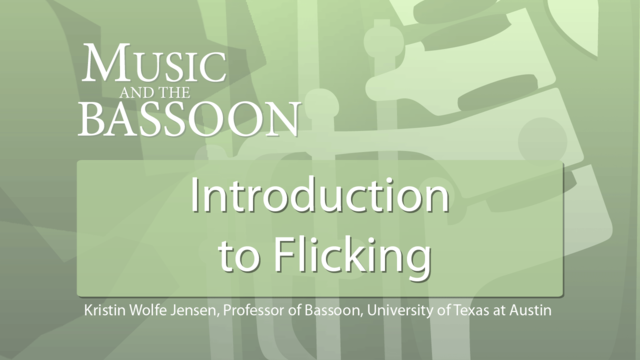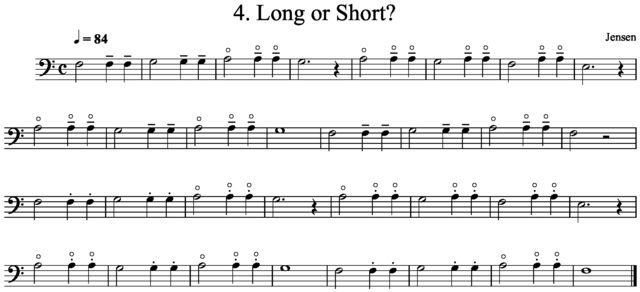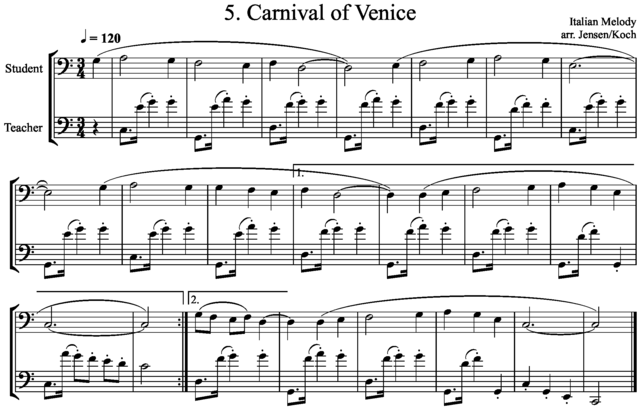
A2 requires a thumb technique called flicking. To flick A2, press the A key with the left thumb right at the beginning of the note, and release it immediately. A2, as well as a few notes above it, will crack or squawk if it is not flicked, producing an impure tone at the attack. Flicking is necessary when tonguing the notes, or when slurring from a leap, but is not necessary when slurring by step.
Some instruments (not very many, but some indeed) will crack on A even after flicking, in which case you should decide whether it sounds better to hold the flick key down for the duration of the note, or use a half-hole on the A. When you are approaching A2 from a lower note, your thumb will have to leave the whisper key a split second early to reach the flick key by the beginning of the A. The circle above the A’s (o) is a reminder to flick.
Since A2 is the first note so far that does not use the whisper key, this is a good time to make sure that your bocal is clean. Use a bocal brush, available from double reed supply companies, while running warm water through the bocal, several times a month to avoid a slimy residue lining the inside of the bocal. Check to make sure that the whisper key vent (the hole in the side of the bocal) is clear, otherwise the middle range and high range notes will not speak.





